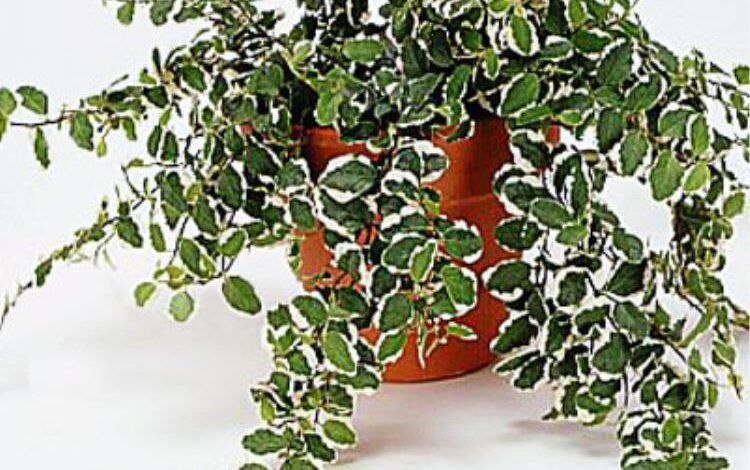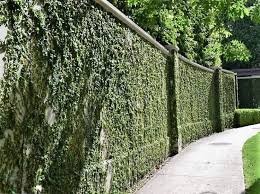
Ficus pumila, commonly known as Creeping Fig, is a fast-growing, versatile vining plant that has gained popularity for its attractive foliage and unique ability to cover surfaces. Native to East Asia, including China and Japan, this plant is a member of the larger Ficus genus, which includes other well-known species like Ficus elastica (Rubber Plant) and Ficus benjamina (Weeping Fig). Whether grown indoors or outdoors, Ficus pumila adds a touch of greenery to any space, making it an excellent choice for gardeners and plant enthusiasts alike.
Key Features of Ficus Pumila
Ficus pumila is a perennial plant that exhibits several distinct features, making it an appealing choice for both indoor and outdoor settings:
- Small, Heart-shaped Leaves
The plant’s leaves are small, oval, and glossy, typically dark green, which gives it a delicate and lush appearance. The leaf shape, along with the vine’s growth habit, makes Ficus pumila ideal for ornamental purposes. - Climbing and Creeping Growth
Creeping Fig is a vigorous grower, sending out long tendrils that attach to surfaces via tiny aerial roots. These roots allow the plant to climb walls, fences, and trellises, or simply spread out along the ground as a dense ground cover. - Versatility
Ficus pumila can be used in a wide range of ways, from indoor decorative vines to outdoor privacy screens or natural wall coverings. It can also be trained to grow in hanging baskets or pots, making it a flexible plant for various garden designs and interior decors.
How to Grow Ficus Pumila
Caring for Ficus pumila is relatively easy, as long as you provide the right growing conditions. Here’s what you need to know to help it thrive:
- Light Requirements
Creeping Fig prefers bright, indirect light but is adaptable to a range of light conditions, including low light. Indoors, it will thrive near a window with filtered light. Outdoors, it can tolerate partial shade, although it flourishes with some exposure to direct sunlight. - Watering Needs
Ficus pumila enjoys consistently moist soil but not soggy conditions. Make sure the pot has good drainage to avoid waterlogged roots. During the growing season (spring and summer), water regularly, allowing the top inch of soil to dry out between waterings. In the winter months, reduce watering frequency as the plant’s growth slows down. - Soil and Fertilization
Plant Creeping Fig in a well-draining, rich soil mix for optimal growth. A general-purpose potting mix works well, but adding some sand or perlite to improve drainage can benefit the plant. Fertilize once every 4-6 weeks during the growing season with a balanced liquid fertilizer to encourage healthy growth. - Temperature and Humidity
Ficus pumila thrives in temperatures between 60-85°F (16-29°C). Being a tropical plant, it enjoys moderate to high humidity. If growing indoors, placing the plant near a humidifier or in a bathroom with natural light can help maintain the moisture levels it needs.
Training and Pruning Creeping Fig
One of the best features of Ficus pumila is its climbing ability, which makes it perfect for vertical gardening. Here are a few ways to manage and train its growth:
- Climbing and Covering Surfaces
Creeping fig’s aerial roots make it an excellent choice for covering walls, fences, and trellises. To guide the plant’s growth, you can train it along a wire or mesh, allowing it to create a lush, green cover over structures. - Pruning for Shape
Regular pruning will help keep Creeping Fig in shape and prevent it from becoming too unruly. Trim the tendrils when necessary to keep the plant tidy and encourage more compact growth. Pruning also ensures that the plant doesn’t overwhelm other plants or spaces.
Common Issues with Ficus Pumila
While Ficus pumila is relatively easy to care for, it can face some common problems:
- Yellowing Leaves: This is typically a sign of overwatering or insufficient light. Ensure that the plant is not sitting in water and that it is getting the right amount of light.
- Pests: Like many houseplants, Creeping Fig can attract pests such as aphids, spider mites, and mealybugs. Keep an eye on the leaves and treat infestations with insecticidal soap or neem oil.
- Root Rot: If the soil stays too wet for too long, Ficus pumila’s roots can rot. To prevent this, make sure your plant’s pot has good drainage and let the soil dry slightly between waterings.
Uses of Ficus Pumila
Ficus pumila is not just a beautiful decorative plant; it serves several practical purposes as well:
- Indoor Plant
As a trailing or climbing vine, Ficus pumila makes a stunning indoor plant. It can be placed in hanging baskets or trained along a trellis for a beautiful indoor garden look. - Outdoor Landscaping
Outdoors, Ficus pumila is often used as a ground cover, climber, or natural fence. Its fast-growing nature makes it an excellent choice for creating privacy screens or covering unsightly walls and structures. - Topiary and Bonsai
Creeping Fig can also be pruned and trained into topiary shapes or bonsai forms, offering a unique way to showcase its beautiful foliage.

